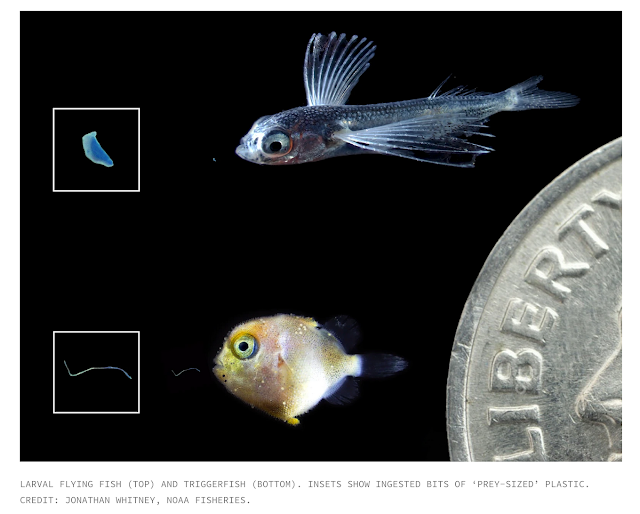As reported in Vice:
The study, led by researchers at the National Oceanic and Atmospheric Administration and published Monday in the Proceedings of the National Academies of Sciences, found that larval fish nurseries off the coast of Hawaii are hotbeds of plastic pollution, with trash pieces outnumbering actual fish seven to one. As a result, baby fish looking for a bite are sometimes chowing down on tiny flecks of “prey-sized” plastic instead...
By dissecting hundreds of fish larvae, the researchers learned that those small pieces of plastic are making their way into the bellies of many types of fish, including commercially-important species like swordfish and mahi-mahi as well as flying fish, a key prey item for seabirds. Overall, fish larvae in slicks were about twice as likely to have ingested plastic as those found elsewhere.
The researchers aren’t sure how ingesting plastic impacts the health of these baby fish, but there are reasons to be concerned. Plastic can absorb a variety of chemical pollutants, potentially causing them to bioaccumulate in animals that eat it. In adult fish, one study found that plastic “nanoparticles” can cross the blood-brain barrier and trigger behavioral problems. In developing larvae, the researchers say a bite or two of plastic might cause fish to feel full when they haven’t consumed anything edible.
Plastic ingested by fish larvae could also be making its way into anything that eats them, including us...

No comments:
Post a Comment